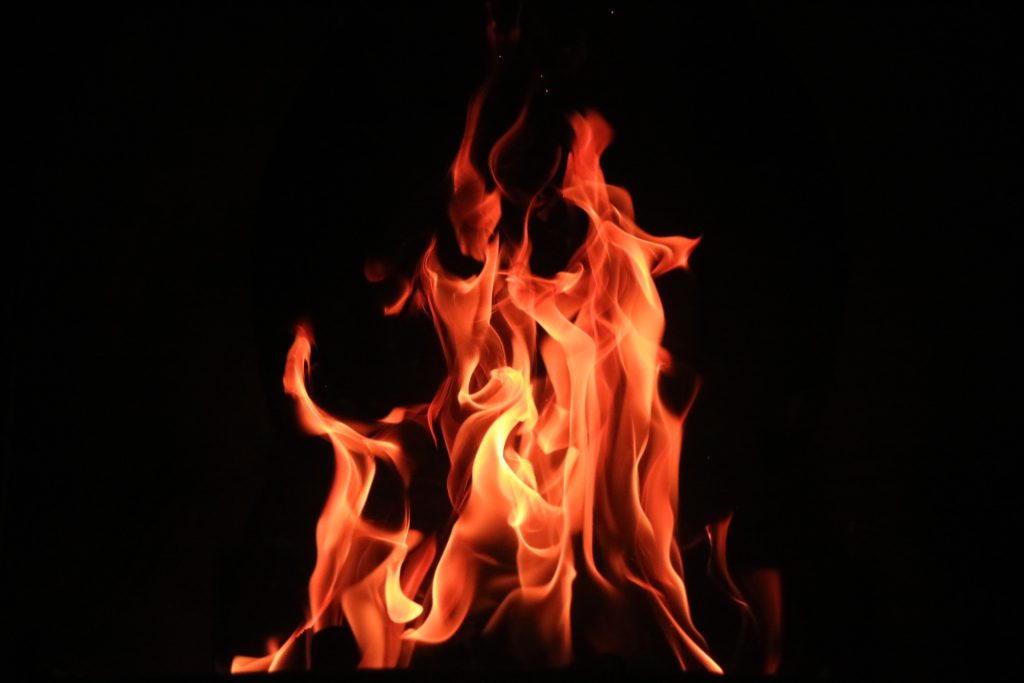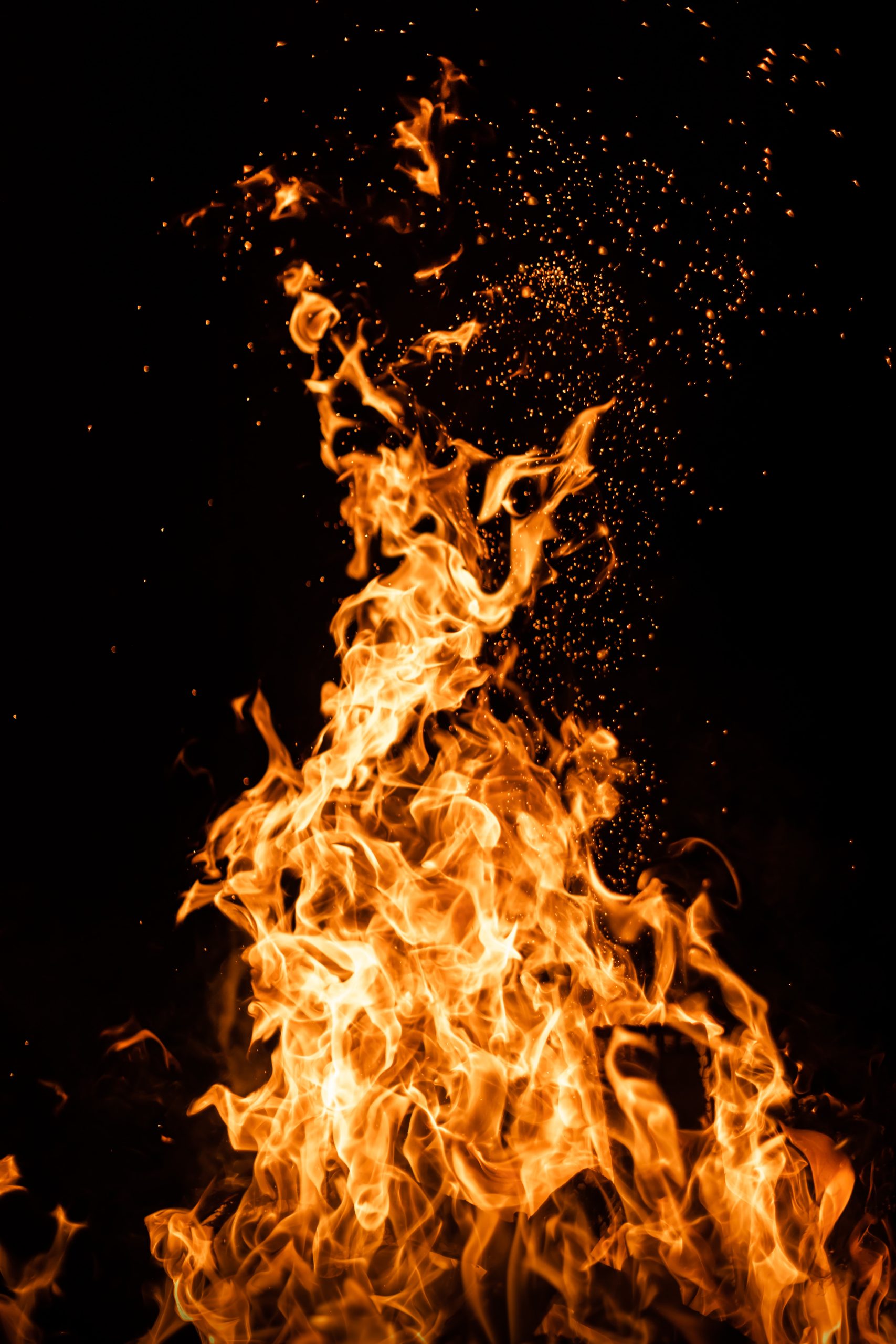150 Chapter Two – Lesson Seven
Chapter Essential Questions
- What are the unique challenges faced by First Nation communities when responding to emergency situations such as floods, fires, mold in housing, and epidemic outbreaks?
- How can emergency responders effectively coordinate with First Nation communities during emergencies to provide adequate support?
- What resources and funding are available to support First Nation communities in preparing for and responding to emergency situations?
- How can First Nation communities work collaboratively with government agencies, non-governmental organizations, and other stakeholders to improve emergency response in their communities?
- What are the principles of the incident command structure and how is it utilized?
Lesson 7: Dealing with Fire Emergencies
Outcomes
By the end of this lesson, you should be able to:
- Describe the different kinds of fires that can occur and how to appropriately respond to each kind – including the proper extinguishing procedures and types;
- Discuss why it is important to understand different kinds of fires;
- Explain the most common kind of fire to happen;
- List key parts to an EAP procedure for a fire incident;
- Identify satisfactory procedures for fires;
- Create an emergency procedure (part of an EAP) for a fire.
The five classes of fire
There are five classes of fires, each with its type of fuel and appropriate extinguisher.
1. Class A fires: These fires involve ordinary combustibles such as wood, paper, cloth, and plastics. To extinguish them, use water or a multi-purpose fire extinguisher. If the fire is small, you can smother it with a blanket or towel.
2. Class B fires: These fires involve flammable liquids and gases such as gasoline, propane, and oil-based paint. To extinguish them, use a foam fire extinguisher or carbon dioxide (CO2) fire extinguisher. Do NOT use water because it can spread the fire.
3. Class C fires: These fires involve electrical equipment such as appliances, wiring, and circuit breakers. The key to extinguishing these fires is to cut off the electricity. Use a CO2 fire extinguisher or dry chemical fire extinguisher that is designed for electrical fires.
4. Class D fires: These fires involve combustible metals such as magnesium, potassium, and titanium. Use a special class D fire extinguisher such as metal powders or sand to smother the flames. Do NOT use water or foam as this can cause the fire to spread.
5. Class K: grease or oil fires specifically from cooking
In summary, it’s essential to understand the fire type and use the corresponding extinguisher and procedures to prevent the situation from becoming more severe. Remember, always prioritize safety and evacuation measures.
| Fire Class | Fuel Type | How to Suppress | Fire Extinguisher Type |
| Class A | Freely burning combustibles | Water, smothering | ABC/powder, water, water mist, foam |
| Class B | Burning liquid or gas | Smothering | ABC/powder, CO2, water mist, clean agent |
| Class C | Electrical fire | Non-conductive chemicals | ABC/powder, CO2, water mist, clean agent |
| Class D | Metallic fire | Dry powder agent | Powder |
| Class K | Cooking or grease fire | Smothering, wet chemical | Wet chemical, water mist |
The different kinds of fires
Understanding different kinds of fires is important because it helps to determine the appropriate fire safety practices and firefighting techniques to use in a specific situation. Different types of fires require different methods of extinguishing, and using the wrong method could potentially cause more harm than good. For example, using water to extinguish an electrical fire could create a serious hazard due to the potential for electrocution.
Additionally, different types of fires can be caused by different sources, such as cooking, electrical, and chemical. Understanding the causes of different types of fires can help individuals and organizations take proactive measures to prevent fires from occurring in the first place.
Lastly, understanding different types of fires can help individuals and organizations to develop emergency plans and procedures for dealing with fires. In the event of a fire, having a well-developed plan that is specific to the type of fire can help to minimize damage, injuries, and loss of life.

What is the most common type of fire?
The most frequent kind of fire is Class A, which originates from combustible materials such as rubber, paper, plastic, wood, and fabric. These fires have low ignition temperatures and will stop burning when the fuel or oxygen is gone. A garb-age fire is an instance of a Class A fire, and if ash remains after the fire, it’s most likely a Class A Fire.
The key components of a emergency action plan when dealing with a fire
1. Communication and notification: Establish a clear method of communication, such as calling 911 or activating the fire alarm system. Ensure that all employees and visitors are alerted to the emergency and directed to evacuate the premises.
2. Evacuation procedures: Develop evacuation plans, including designated escape routes, procedures for assisting individuals with disabilities, and assembly areas for safe and orderly evacuation.
3. Emergency response team: Appoint and train a team of employees to respond to emergencies. Assign specific roles and responsibilities, and clearly communicate procedures to team members.
4. Fire suppression equipment: Install and maintain fire extinguishers, sprinkler systems, smoke detectors or other fire suppression equipment.
5. Post-incident accountability: Develop a system for accounting for all employees and visitors after an emergency. Verify that everyone is accounted for and safe.
6. Regular drills and maintenance: Conduct regular emergency evacuation drills and update procedures as needed. Inspect and maintain all fire suppression equipment.
7. Emergency contact list: Maintain a current list of emergency contacts, including local fire departments, emergency services, and building owners or managers.
8. Training and education: Provide regular training to employees and visitors on fire safety procedures, including how to use fire suppression equipment and how to evacuate the building quickly and safely.
A comprehensive plan for fire safety is a detailed document that pertains to a particular building or property. The plan should address various aspects of fire safety, such as safe evacuation procedures for occupants, proper maintenance and housekeeping practices to prevent fires, and strategies to control the damage caused by fires. The content of the plan should be tailored according to the specific features and requirements of the property or business. To this end, an audit or review of the site must be conducted to identify factors that may affect fire safety. The audit includes an assessment of the layout of the site, points of entry and exit, roadways, use of the building, storage and usage of items, connections to water or fire department, alarm and sprinkler systems, and other considerations.
The fire safety plan should include emergency procedures to be followed in case of fire. These procedures should cover how to sound the alarm, notify the fire department, building officials, or designated staff, evacuate occupants, facilitate the evacuation of individuals who require assistance, and confine, control, and extinguish the fire if feasible. The plan should also specify the frequency and manner of fire drills, provide information to staff assigned with fire safety duties and responsibilities, offer organizational and educational support for staff with fire safety duties, outline strategies to prevent or control fire hazards, and describe maintenance procedures for fire protection systems. The plan should also include diagrams and instructions for any fire or emergency systems at the site, identify alternative fire safety measures, and allow for fire department access to the building and to the fire location within the building.

Procedures for fires
1. Prevention: The first and foremost aspect of fire safety is prevention. Regular inspections and maintenance of electrical equipment, heating and cooling systems, and flammable materials storage is essential.
2. Smoke detectors: Smoke detectors should be installed in all areas of the building. They should be tested regularly to ensure proper functioning.
3. Fire extinguishers: Fire extinguishers should be properly installed in strategic locations within the building. They should be regularly inspected and maintained.
4. Evacuation plan: An evacuation plan should be in place and drills should be conducted regularly to ensure that all occupants of the building are aware of the procedure and are able to evacuate quickly and safely in case of a fire.
5. Communication: Proper communication procedures should be in place to alert occupants of the building in case of a fire. This includes alerting the fire department and any other relevant authorities in a timely manner.
6. Training: Regular training should be provided to all occupants of the building on fire safety procedures, including how to use fire extinguishers and evacuate the building.
7. Clear exits and paths: All exits and evacuation paths should be kept clear and easily accessible at all times. Any obstructions should be removed immediately.
To ensure employee safety, fire safety plans should provide clear instructions for evacuation in the event of a fire. These instructions may include steps such as leaving the area immediately, activating the fire alarm, assisting others in immediate danger if safe, confining the fire by closing doors, using exit stairwells to evacuate, shutting down equipment if applicable, and following pre-planned procedures if designated with fire emergency duties. It is important to emphasize the importance of not using elevators and waiting for an announcement from the fire marshal or supervisory staff before re-entering the building.
Journal Prompt
Using the forum labelled “Course 12: Chapter 2: Lesson 7,” make a journal entry responding to the prompt below. Ensure that you title the entry “Chapter 2: Lesson 7”. Ensure that you title the entry “Lesson 7”. After writing a journal entry, go and make a comment on two other posts from your classmates. It can be about anything you noticed, liked, agreed with etc. The idea is to continue the dialogue about the topic.
Prompt: For this journal response, what steps have you taken to ensure the safety of your employees and guests in the event of a fire emergency?
How do you plan to keep everyone informed and calm in such a situation? What additional measures can you implement to improve your fire safety procedures?
*View the journal entry and journal comment rubric to see how they will be marked.
| Criteria | Exemplary 4 |
Accomplished 3 |
Developing 2 |
Beginning 1 |
| Purpose | Strong voice and tone that clearly addresses the purpose for writing. | Appropriate voice and tone. The purpose is largely clear. | Attempts to use personal voice and tone. Somewhat addresses the intended purpose. | Demonstrates limited awareness of use of voice and tone. Limited evidence of intended purpose. |
| Understanding | Many interesting, specific facts and ideas are included. | Many facts and ideas are included. | Some facts and ideas are included. | Few facts and ideas are included. |
| Conventions | All grammar and spelling is correct. | Only one or two grammar and spelling errors. | A few grammar and spelling errors. | Many grammar and spelling errors. |
| Reply | Made two significant contributions to the online forum. Highly supportive of others. | Made one contribution to the online forum. Supported group members. | Attempted to contribute to online forum but was vague and unclear in the writing. | Minimally involved. Offered limited support to online group members. |
